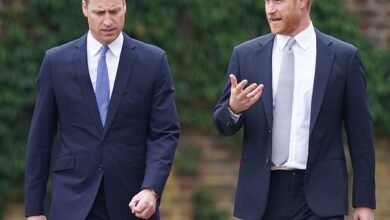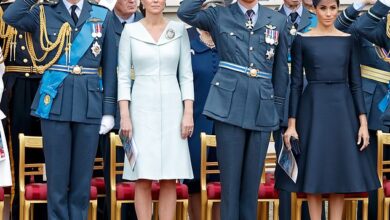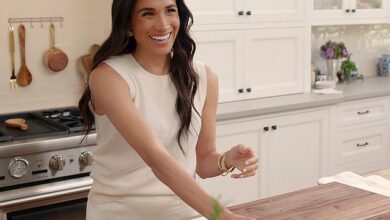Was Meghan Markle actually the ‘Spare’ instead of Prince Harry? After joining the Royal Family she ‘could not find her place’ in the supporting cast and instead wanted to become the ‘most loved and best-known royal’, book claims
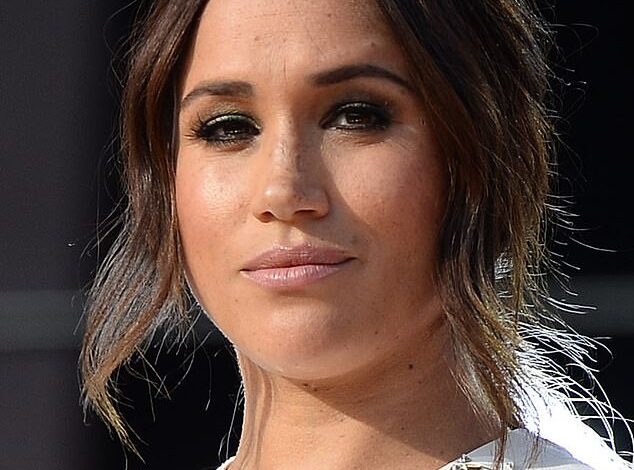
When Prince Harry and Meghan Markle walked down the aisle in May 2018, the nation looked forward with optimism to what the pair of energetic royals would achieve.
Good-looking and well spoken, the hope was that the Sussexes would connect with young people to reverse their growing sense that the Royal Family was something of a bygone era.
But instead, the public witnessed a tumultuous 19 months of bad headlines where they repeatedly attacked the institution they were meant to serve because they were so unhappy inside it.
It all ended when they decided to dramatically walk away in January 2020, vowing to forge a new life in the United States – far away from The Firm.
What happened behind the scenes when Meghan joined Harry in the family has now been revealed in a new book, told through the eyes of the servants who worked with them.
Royal author Tom Quinn spoke to many of those who rubbed shoulders with Harry and Meghan behind the high walls of Kensington Palace for his book Yes, Ma’am: The Secret Life Of Royal Servants.
In the book, which came out in March, Mr Quinn argues that, for all that has been written about Harry being the ‘Spare’, it was ‘clearly Meghan who felt she could not find her place’.
Due to her constant clashes with the courtiers who run things behind the scenes, Mr Quinn writes that Meghan was sidelined, commenting ‘she too was a spare’.

When Meghan Markle first joined the Royal Family she found herself the ‘Spare’ as she ‘felt she could not find her place’, according to a royal expert
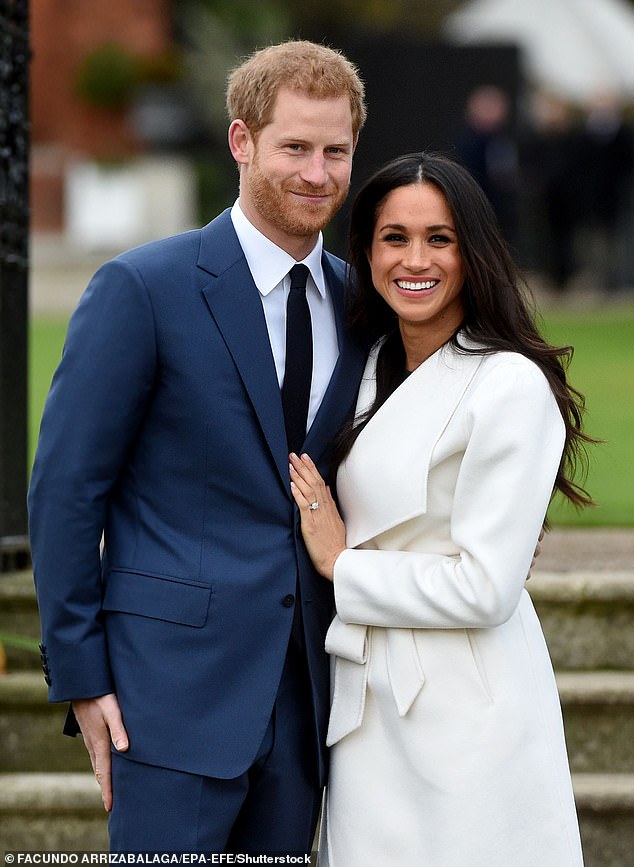
Prince Harry and Meghan Markle pose during a photocall after announcing their engagement in the Sunken Garden in Kensington Palace on November 27, 2017
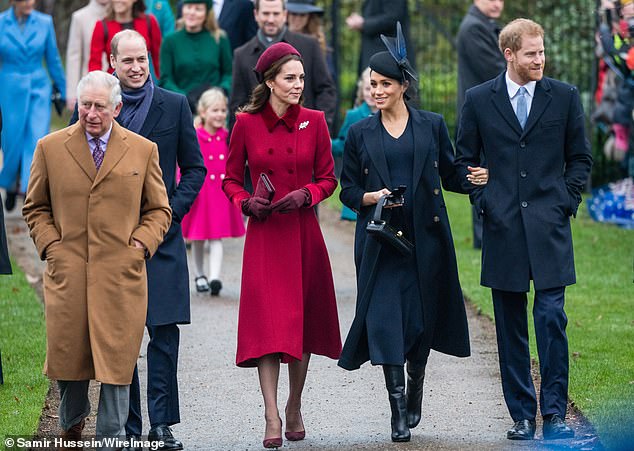
Meghan is pictured with Charles, William, Kate and Harry on Christmas Day in 2018
According to one of Elizabeth II’s former courtiers in the book, the Palace began to worry when it became clear that Meghan had plans for her life as a working royal that were not compatible with the approved programme.
They added that they didn’t think Meghan understood that, when joining the Royal Family, ‘you don’t do as you please, you do as you’re told’.
A courtier claimed that Meghan said ‘What Diana started, I want to finish’, but they added that although she wanted to pursue the late princess’s charitable work to some extent, it was on a part-time basis.
‘She really did have a messiah complex’, one of the couple’s former staffers told Mr Quinn, pointing out that the duchess was focused on how she could become the most loved and best-known royal.
But it seemed she wanted to rise to the top in her own way.
Despite the late Queen giving Meghan some of her trusted hands, Sophie, Duchess of Edinburgh, and Lady Susan Hussey, to help Meghan learn the ropes, she reportedly turned them away.
The ‘Meghan-knows-best’ attitude seemed to upset the current staff at Kensington Palace.
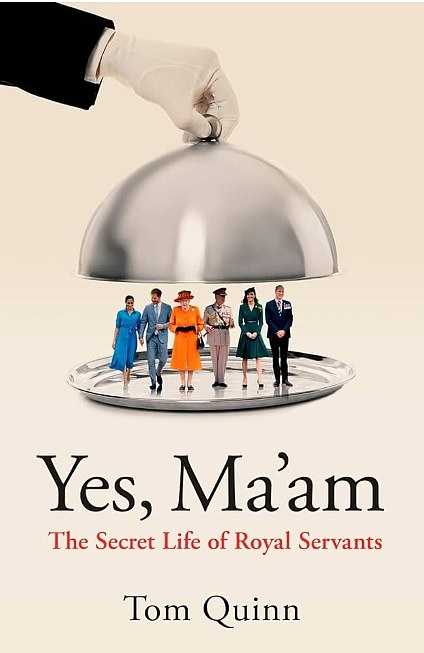
The latest revelations about Meghan’s journey to joining the Royal Family have come from Tom Quinn’s new book, Yes, Ma’am: The Secret Life Of Royal Servants (published by Biteback, £20)
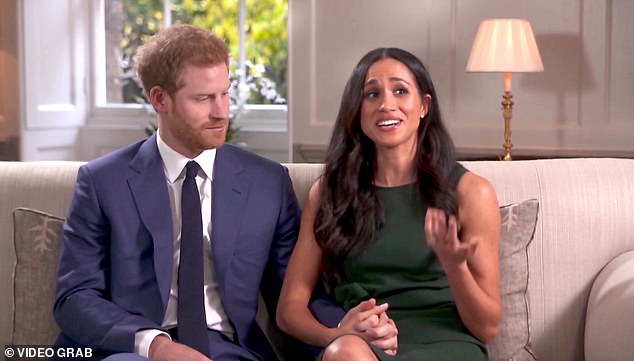
At the couple’s engagement interview in November 2017, viewers watched closely as Meghan showed how confident she was
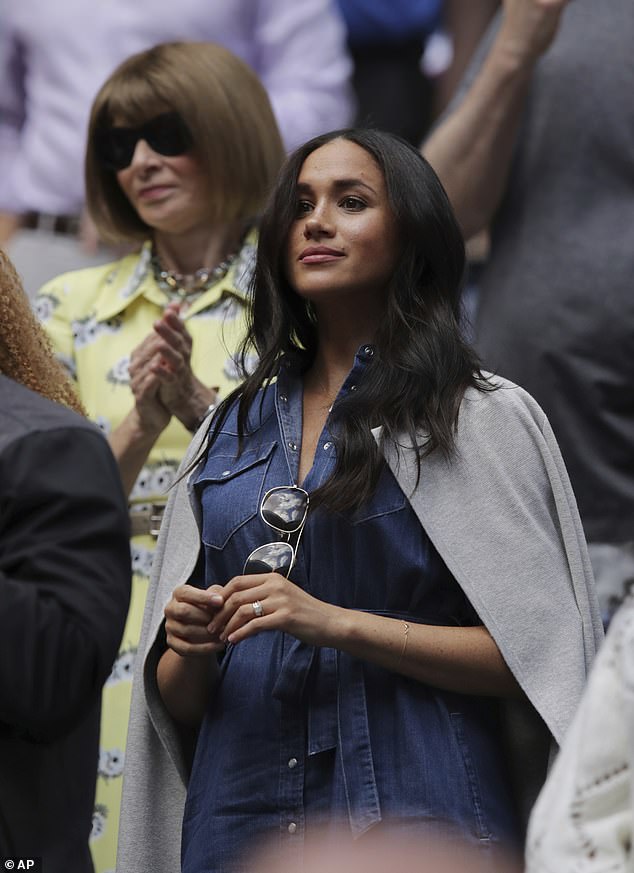
One image from the engagement interview shows Meghan boldly leaning into Harry’s space
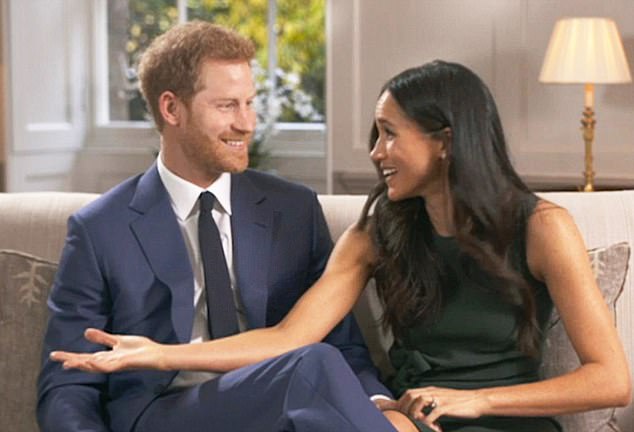
Meghan was seen to be very dominant in their first TV interview, with her arm stretched across Harry’s body
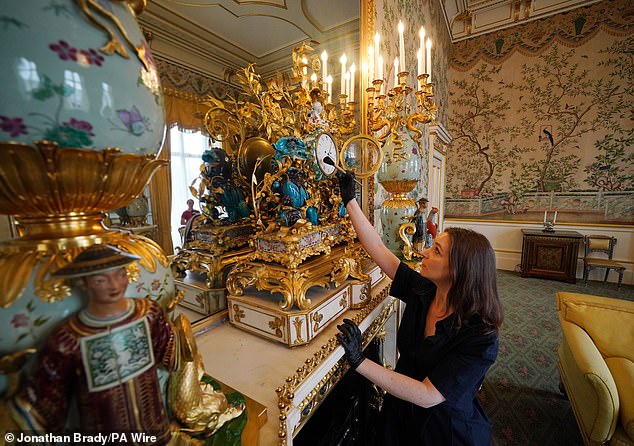
The claims of Meghan’s behaviour have been made by former Palace staff in the book Yes, Ma’am: The Secret Life Of Royal Servants. Picture: Stock photo of staff member not related to the book
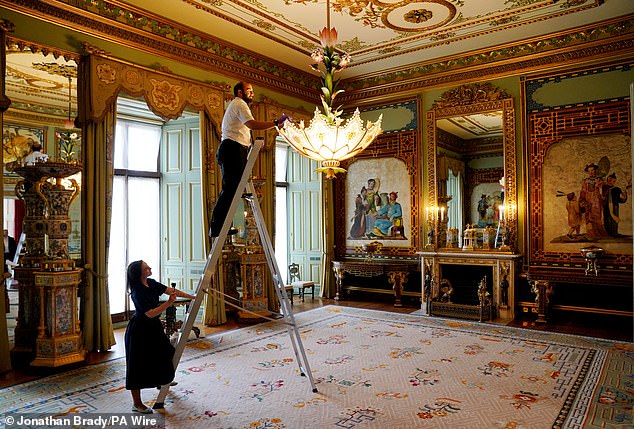
The Royal Family employs an army of staff who often pick up on secrets while they are working (stock photo)
A former member of staff said the old guard really didn’t like it when someone from the United States tries to change things as they are ‘terrific snobs’.
Elsewhere in Mr Quinn’s book, he explained that although Meghan was indeed branded ‘the Duchess of Difficult’ by some staff, she did have her supporters.
Other ordinary staff liked her feisty and change-hungry nature. Some suggested it was more a case of ‘Duchess Different’.
She is also articulate and sophisticated – a woman who, before meeting Harry, was a human rights activist, clean water campaigner, a women’s advocate to the United Nations and a champion for gender equality.
Before her marriage to Prince Harry, she laid out her feminist credentials by backing the #MeToo campaign, urging women to ‘use their voice’.
The way she went about it, though, raised eyebrows.
Mr Quinn describes how Kensington Palace staff split into ‘for Meghan’ and ‘against Meghan’ and the atmosphere became one of ‘swirling rumour, gossip and backbiting’.
According to his sources, Meghan became especially friendly and close with one particular junior member of staff, but this was seen as inappropriate by the senior royals.

Meghan at the US Open women’s singles tennis final between Serena Williams and Bianca Andreescu in 2019
Meghan also reportedly felt upset because William, as the heir to the throne, was given better treatment by staff than her husband.
But perhaps the biggest problem Meghan faced when she became a member of the Royal Family was knowing how to treat servants properly.
Blood royals had grown up ordering staff around, and knew how to do it properly, but for Meghan, who wasn’t used to it, there were problems.
One former staffer told Mr Quinn that Meghan would alternate between being overfriendly and hugging staff, to being irritated when they didn’t instantly respond.
Meghan reportedly felt that Harry was too deferential to both his family and to the staff.
Mr Quinn believes she didn’t like the fact that Harry tended to ask staff if they would mind tidying up or bringing something to him.
In Buckingham Palace, waspish below-stairs staff jokingly referred to Meghan and Harry as ‘Monica and Chandler’ after two of the characters in the long-running American sitcom Friends. In the series, control freak Monica is played by Courteney Cox and amiable and weak Chandler by Matthew Perry.
Perhaps because it is mostly staffed by the upper-classes, or maybe simply due to the fact that it is a public institution with long-running rules and conventions, the Palace operates cautiously and by consensus.
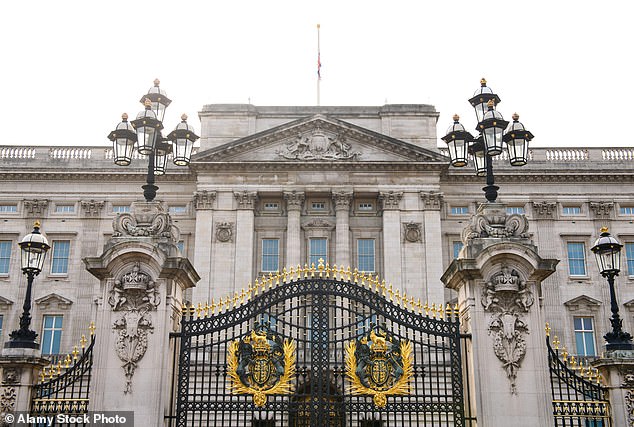
Former Buckingham Palace staff have spoken to Tom Quinn about life behind the gates

Palace staff also said that Meghan’s ‘messiah complex’ led her to clash with aides. Pictured Harry and Meghan in Cape Town in 2019
It was therefore understandable that the transition from Hollywood to the almost 18th-century life of the Royal Family was difficult for Meghan to manage.
Before her marriage to Harry she was a minor actress, whose acting career had not developed beyond her role on the legal drama Suits.
But after she joined The Firm, she was launched into a totally unfamiliar world.
In fairness, no one said marrying into, and finding your place in, the Royal Family was easy.
Diana was too young; Sarah Ferguson too headstrong and even Princess Kate found the transition from middle-class girl to princess tricky.
However, Kate did have more success, with Palace staff noting to Mr Quinn that she took a far more careful approach.
Finding your place in the hierarchical Royal Family for those not in the direct line of succession has always been a difficult process.
Royal figures including Princess Margaret and Prince Andrew have been considered ‘spares’.
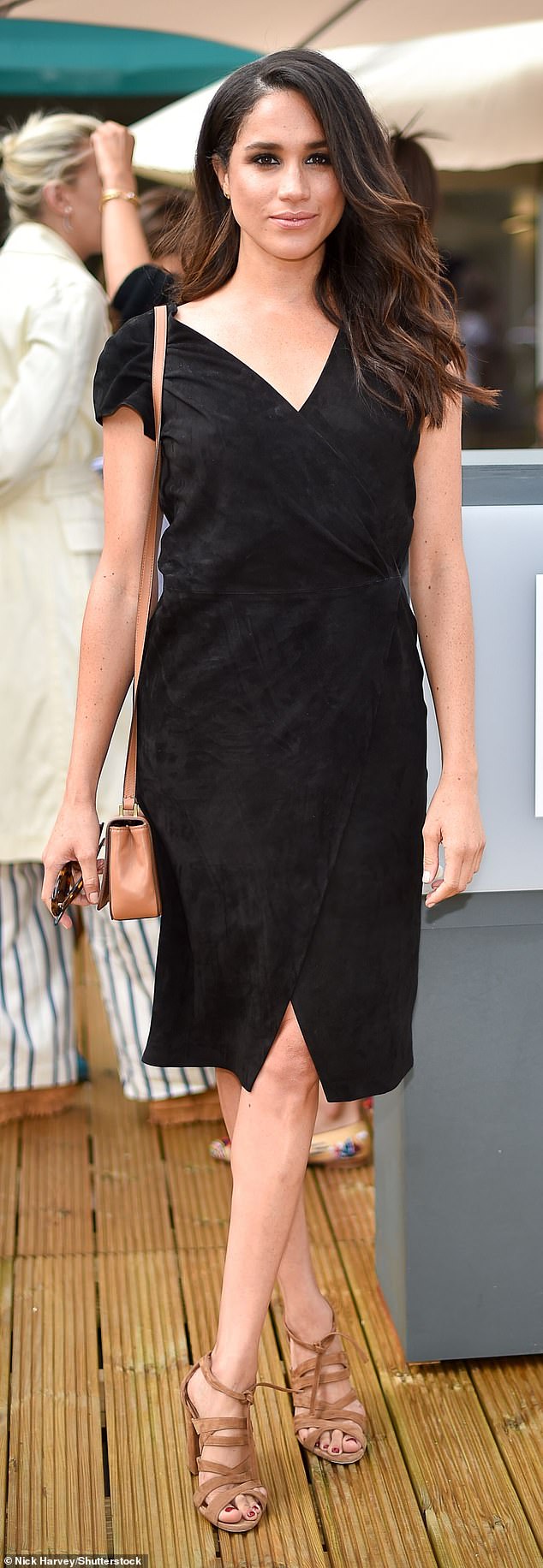
Meghan Markle at Wimbledon on July 4, 2016. She went on her first date with Prince Harry that week
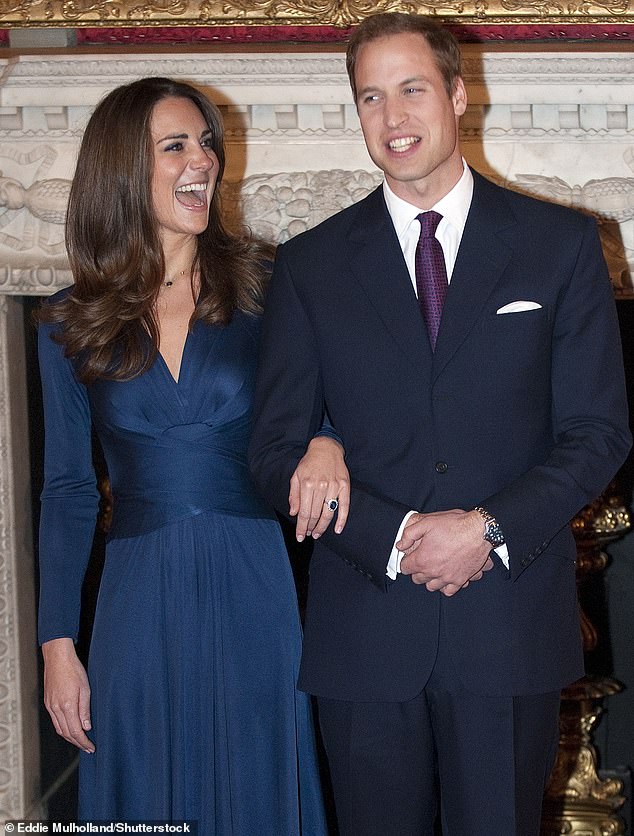
Princess Kate found the transition from middle-class girl to princess tricky, but listened to advice from William and the staff. Pictured: Prince William and Kate announce their engagement on November 16, 2010
An unusual position to hold, the role serves as a ‘reserve’ monarch, who must be prepared to become heir to the throne at a moment’s notice if necessary – at least until the current heir produces their own children.
Of course, in some cases, the so-called ‘spare’ is actually called to rule, as was demonstrated when King Edward VIII abdicated in 1936 and King George VI ascended the throne.
However for the most part, the ‘spare’ is able to live a much freer life without too much scrutiny – but as Harry has alluded to with the title of his memoir, holding this position can cause issues with the prince or princess’s perception of their role.
And when it came to Meghan, just like her husband, she too struggled to find a role in the Royal Family.
This is despite the Queen giving them plum jobs as President and Vice President of the Queen’s Commonwealth Trust – an organisation that supports youth empowerment in Commonwealth countries.
It was designed to be the perfect role for the youth-focused couple, with commentators noting 60 per cent of the population in Commonwealth nations are under 30.
The Commonwealth has long been considered the cause closest to the Queen’s heart, so entrusting its future to Harry and Meghan was a huge moment.
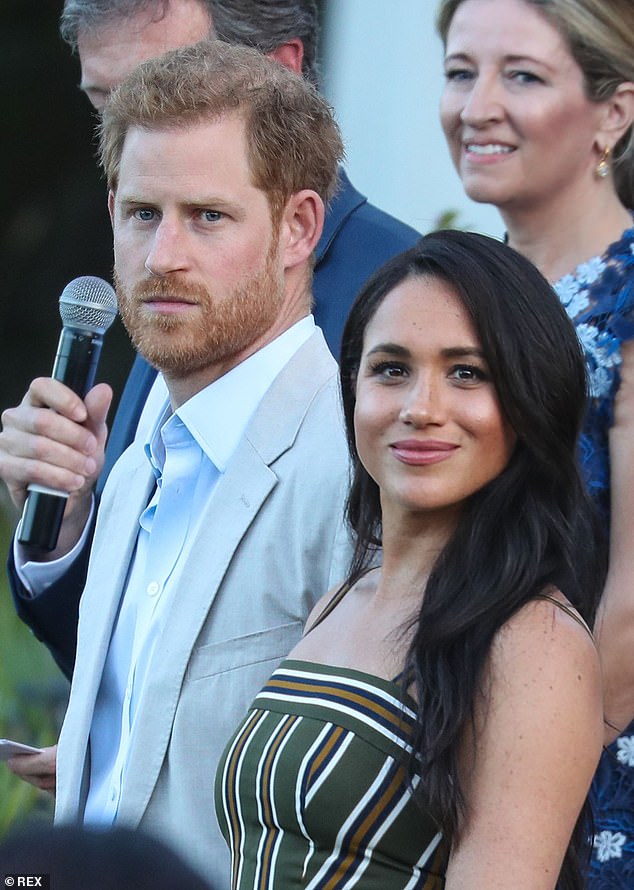
Prince Harry and Meghan attend a reception for young people at the residence of the British High Commissioner in Cape Town, September 24, 2019
But like all of their royal duties, it came to an end following Megxit.
It seems despite the Queen’s best attempts, Meghan and Harry were determined to wallow in their identities as ‘Spares’ and refused to play a supporting role in the family.
When Harry published his tell-all memoir, he described how his position left him apparently bubbling with resentment, writing: ‘I was the shadow, the support, the Plan B. I was brought into the world in case something happened to Willy.
‘I was summoned to provide back-up, distraction, diversion and if necessary, a spare part. Kidney, perhaps. Blood transfusion. Speck of bone marrow.’
Meghan has never confessed how playing second fiddle during her time in The Firm felt.
But it seems, according to the servants who worked with her, that it left her just as unhappy as her husband.

